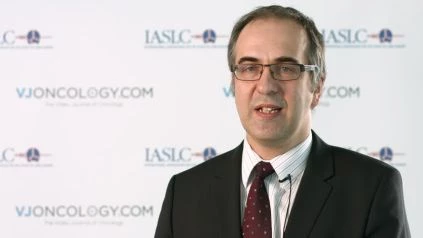Ales Ryska, MD, PhD, of the Charles University, Medical Faculty Hospital, Prague, Czech Republic gives an overview of a session he chaired, which focused on a multidisciplinary approach for the diagnosis of lung cancer. He explains how all specialties are required for correct diagnosis today, including endoscopists, pulmonologists, surgeons, pathologists, and molecular biologists. The first presentation was about the main challenges in the testing of lung cancer, covering what is currently available, and what prospects there are for the near future. His second presentation was about what is new with bronchoscopic techniques. Specifically, how endoscopy can get more material for molecular testing. Then he explains a presentation by a surgeon on how it is important for surgeons to maintain quality control in resection of the lung cancer. Prof. Ryska elaborates that the main problem in multidisciplinary lung cancer diagnosis is that pathologists get less tissue from less invasive techniques, but oncologists need more information from this tissue. This requires pathologists to be accurate, specific and efficient in gaining all the material and information from the material. Multiplatform testing is therefore needed, which includes immunohistochemistry, fluorescence in situ hybridization (FISH) and molecular techniques. There is growing popularity for multigene approaches, where next-generation sequencing (NGS) is used to gain information on mutation status for several genes at once, and from one single sample. This allows the sample to be used as efficiently as possible. Prof. Ryska then goes on to discuss the liquid biopsy. This is the testing of circulating cell-free DNA (cfDNA) which is shedded into circulation by tumor cells and also by normal cells. cfDNA can be isolated and tested for the presence of mutations to give information on status of the tumor, and possibility of targeting new mutations with newly available drugs. In some patients, this might eliminate the need for re-biopsy, or more invasive approaches. cfDNA is not always present, so negative results do not always mean the mutation is not there. One lab or pathology department must therefore evaluate both the tissue sample and blood sample for cfDNA. Recorded at the 2016 World Conference of Lung Cancer (WCLC) of the International Association for the Study of Lung Cancer (IASLC) in Vienna, Austria.
Talking points in the multidisciplinary approach to lung cancer diagnosis: challenges, bronchoscopic techniques, multigene approaches, and liquid biopsy

